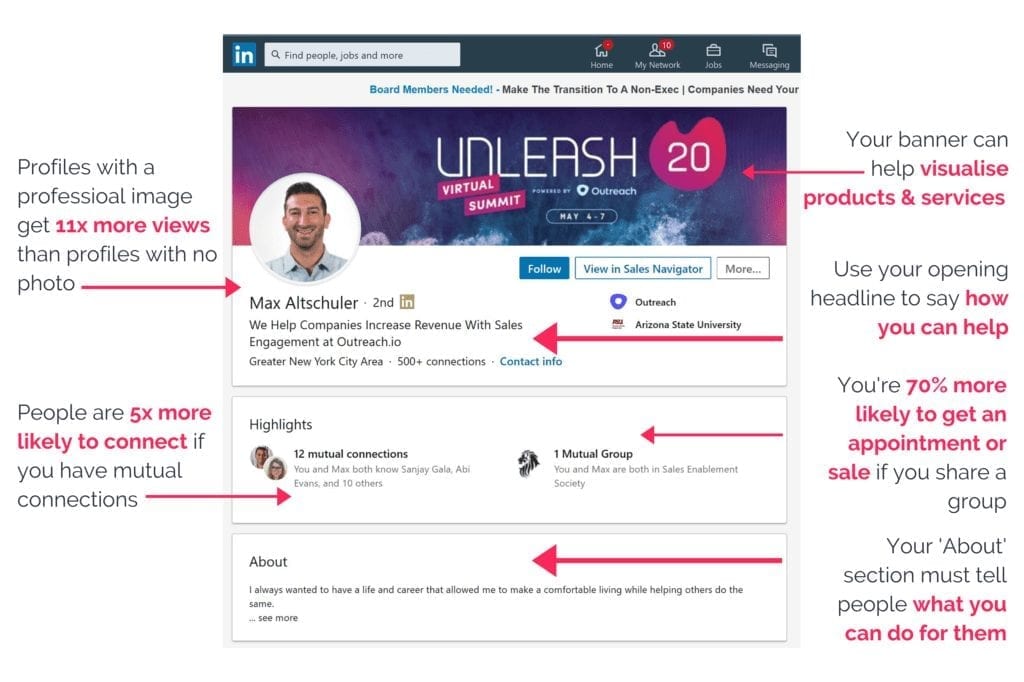Part II: How your sales team can use LinkedIn and Social Selling to deliver results at pace
In our last post we looked at some compelling reasons why you should be using LinkedIn as part of your sales strategy. Particularly with sales forces grounded, and social selling growing in importance.
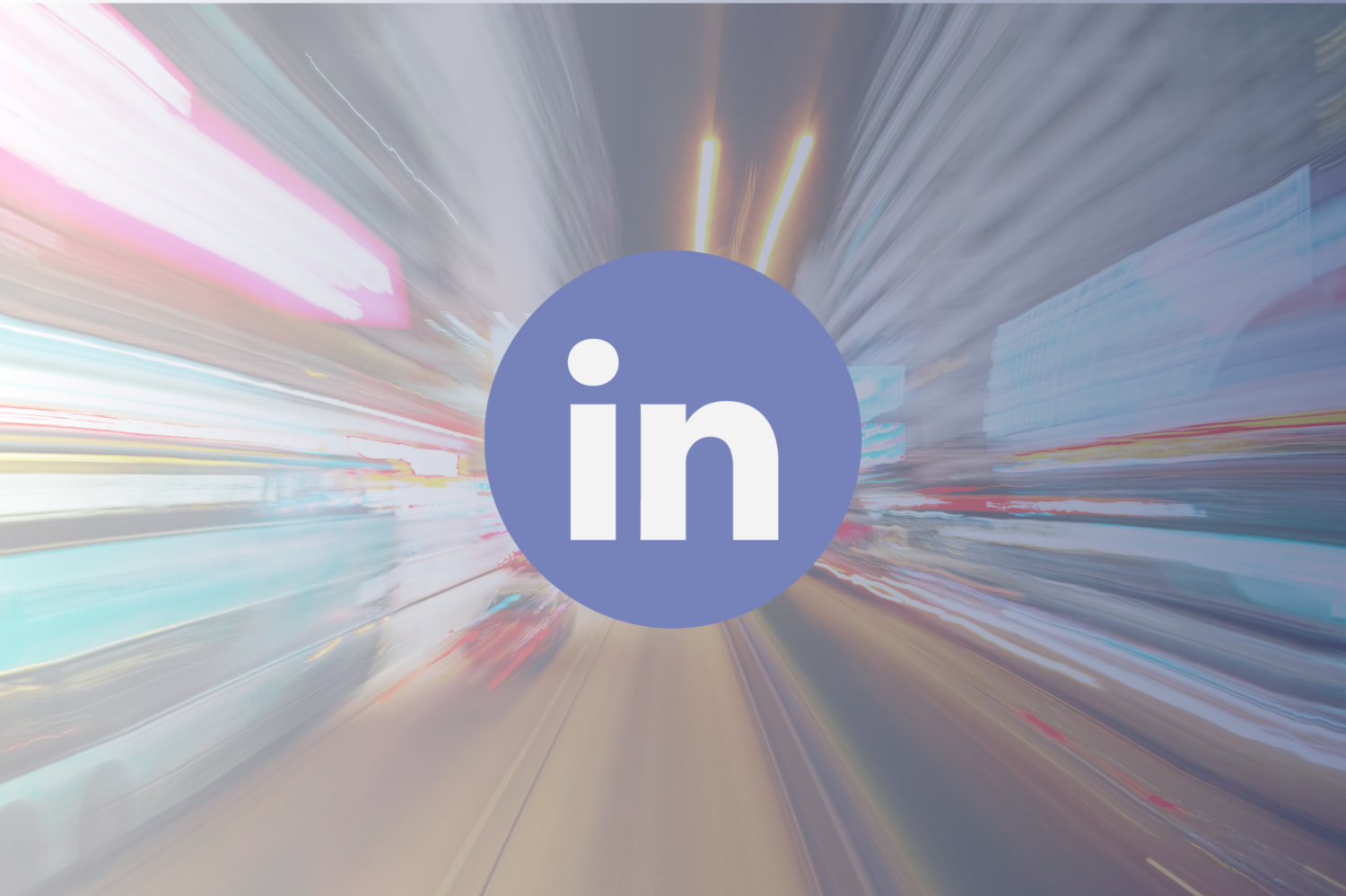
It’s now time to roll up the sleeves and concentrate on exactly how you can use LinkedIn to find, engage and convert prospects into customers.
Ready for some instantly actionable tips?
You have nothing to lose but a 51% higher close rate.
Top sales performers – who close deals at a 51% higher rate than their peers—see networking platforms as “very important” to their success.
As with all research, a healthy pinch of salt is needed. But across different research sources, and based on our own experience working with sales, there is a direct correlation between high sales performers and good social selling habits.
Looking good?
If you’re going to get serious about using LinkedIn, your first port of call must be your profile page. On average – excluding Sales – people spend just 17 minutes on LinkedIn each month. In this current climate however with people more reliant on social networks over f2f, perhaps we can expect that to increase a little. Still, people make judgments within seconds – your profile needs to work hard for you, to create the right first impression from the get-go.
People will head to your LinkedIn profile right after receiving a call from you, before meeting with you, or following your request to connect. It’s got to make an immediate impact.
Your Headline & About sections
- Think about who you want to read this and what you want them to get from it.
- These each need to tell the prospect / customer what you can do for them.
- Steer clear of business jargon and go for words that are informative and clear.
- Think mobile. More than 60% of LinkedIn visits are from mobile users – but only a precis of the first 130 words of your About section is shown to them. Make sure those opening words count.
Simple but important stuff.
Keeping good company?
You are 70% more likely to get an unexpected sale or an appointment scheduled if you are an active member of LinkedIn Groups.
Joining groups helps you to engage with those you are prospecting. It shows you are in their world.
But don’t just join.
Join in!
(We’ve too many tips to share here – drop us a line and we’ll happily share some more).
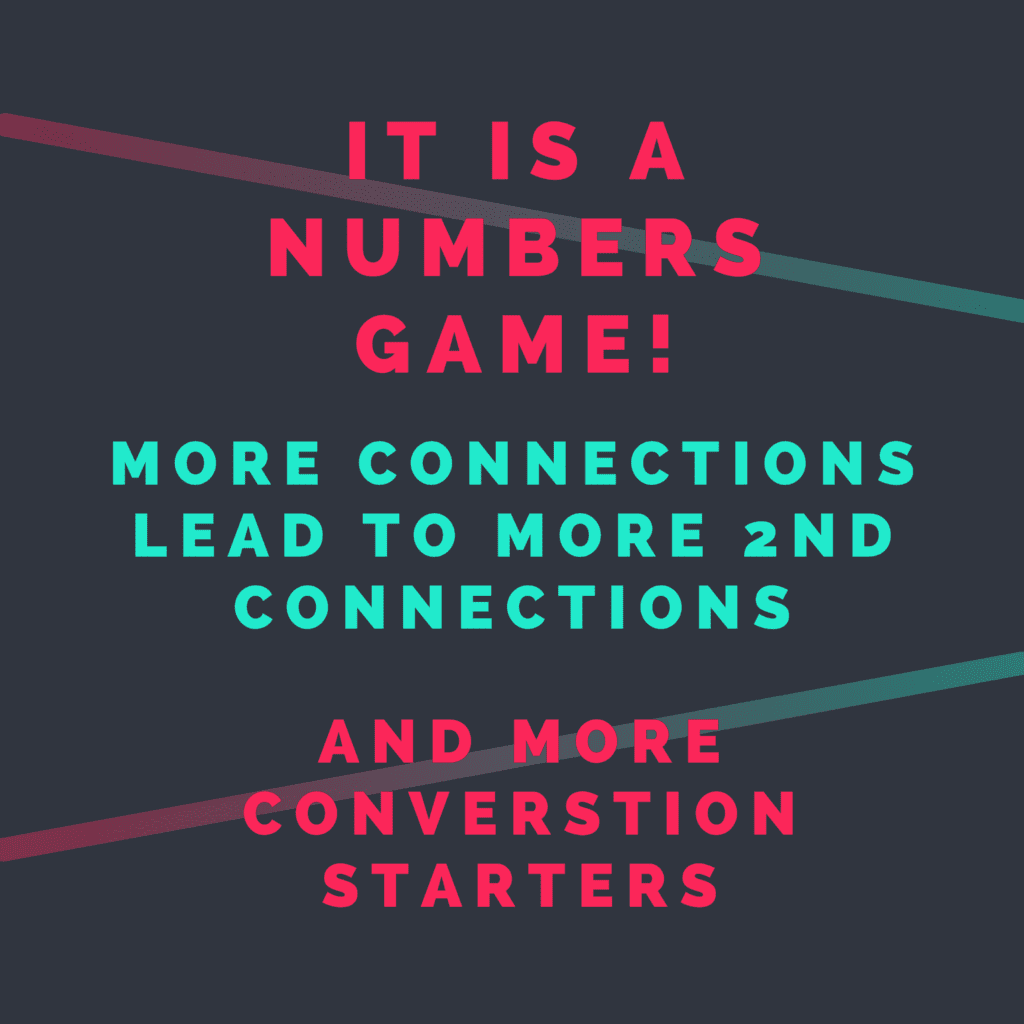
Your goal is to build connections and grow a meaningful network. The right engagement on groups can help before sending your all-important connection request.
While groups offer fertile ground, you should also be focussing on building up connections through existing contacts, both within and outside LinkedIn and by interacting with content that you see in your feed. Various research sources tell us that people are far more (we’ve seen 5x and 7x more cited) likely to connect with you if you have shared connections.
If you don’t grow your network, your chances of having shared connections won’t increase either.
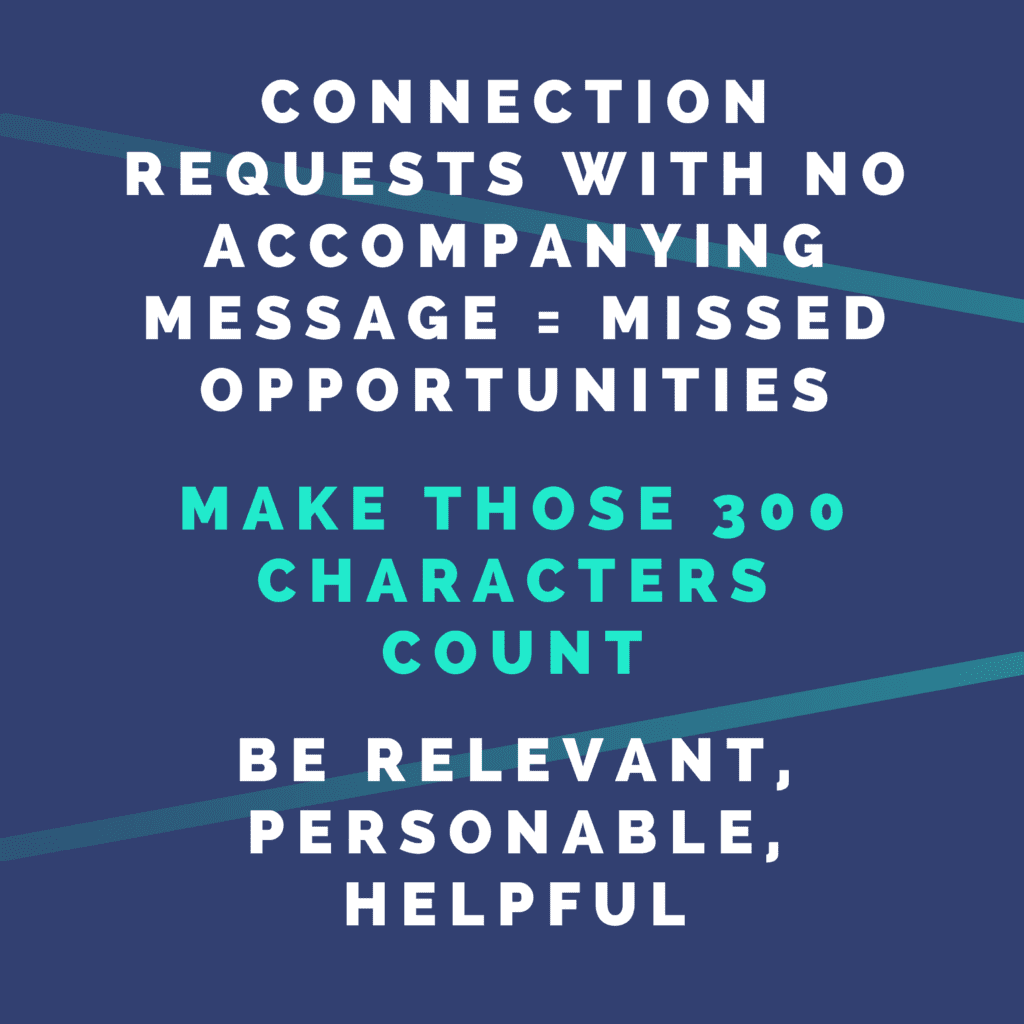
Personalise, personalise, personalise
Never send a blank connection request message after today. This decreases your chances of connecting in the first place.
Use the information you know about a person, their business, their job function, the issues and challenges they’re facing – to craft an opener that will catch their eye and show you’ve taken time to consider your approach.
Stay front of mind
Here are some more subtle ways to stay front-of-mind on LinkedIn:
- Share insights and become known as an expert in your industry.
- Share relevant updates from your prospects.
- Tag your connections in useful content.
- Take part in relevant discussions where your prospects and connections are.
- Share long-form articles about relevant subjects.
Are you navigating with intent?
Adopting an unstructured approach to using LinkedIn is like falling into a rabbit’s hole – you can easily get lost in that warren. And come out with little to show for it.
Fortunately, there’s a tool to help you find your way around: Sales Navigator.
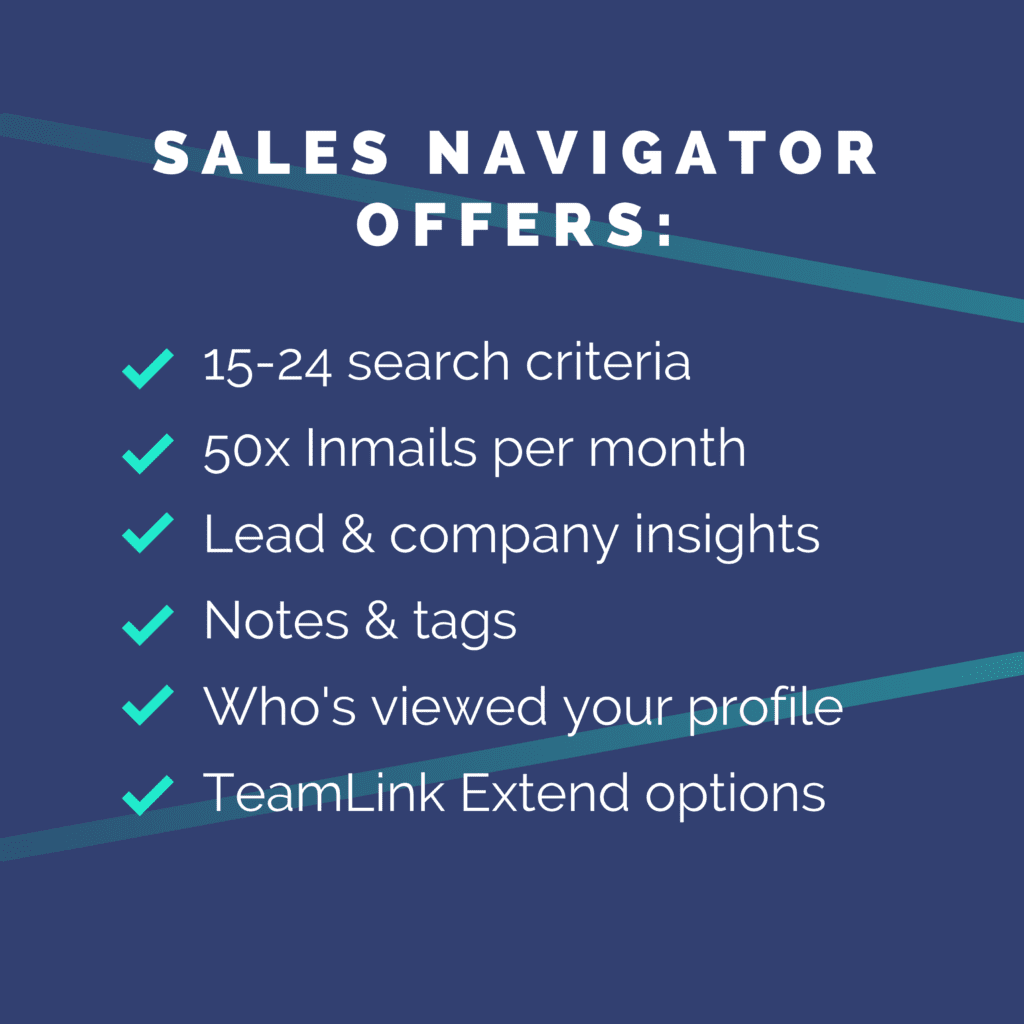
Sales Navigator offers more powerful search and profiling capabilities, and shortcuts which save Sales people significant time
Once you’ve set up your sales preferences Sales Navigator will then point you to the sort of prospects you wish to discover. It will also serve up the latest posts and news from any contacts you’ve flagged as important. This saves a heap of time.
Sales Navigator helps you find the right people, faster.
It is an ideal tool to inform your account-based selling.
TeamLink Extend is a much under-used feature that allows you to unlock sales opportunities by viewing the connections of other members of your sales team. It’s like multiplying your view on LinkedIn by however many people there are on your team.
Key takeaways about developing and closing sales opportunities through LinkedIn
Next time you click on that blue square to browse LinkedIn make sure you use it strategically.
Here’s how – in six easy steps:
- It is important to have a strong professional LinkedIn profile – it influences the first impression have of you on LinkdIn, and can directly impact your sales targets.
- Sharing and engaging with content – in a meaningful way –helps nurture relationships over time. Done well, it will position you as an industry expert – this will directly enhance the sales opportunities you encounter.
- Connect, connect, connect: people are 5x more likely to connect with you if you have shared connections.
- Always personalise your connection requests and messages. Clicking the ‘connect’ button and firing off a blank request is lazy and a missed opportunity.
- Use LinkedIn (better still, Sales Navigator) to gather intel on your target accounts and inform your account-based selling.
- Be consistent: in your communications, your LinkedIn posting and your follow-ups. Stay front-of-mind, over time, and be seen as a helpful expert in your space. It’ll increase your chances of being the person your clients or prospects turn to when they need help.
2020 LinkedIn & Social Selling Survey
Take part in our 2020 LinkedIn and Social Selling survey, which explores how B2B sales teams are currently making use of these tools. Receive the report in return to understand current performance levels and benchmark yourself against the industry.
Survey length: 2-3 minutes

